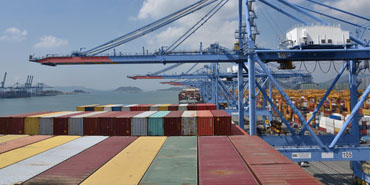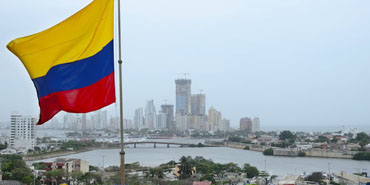Grupo ISA is a multi-Latin business group that operates in the Telecommunications and ICT, Electric Energy, and Roads businesses. It has 54 years of experience and is present in Colombia, Brazil, Chile, Peru, Bolivia, Argentina, and Central America.
ELECTRIC ENERGY
Grupo ISA is the largest electric energy transporter in Colombia, Peru, and the State of Sao Paulo, Brazil. It has its own electric energy transmission infrastructure in operation of 48,330 km (66,668 km if we count ISA's participation with other companies).
77.6% of ISA's revenues come from this sector, totalling 8.7 trillion Colombian pesos in 2021. In addition, this sector employs 3,137 people.
ROADWAYS BUSINESS
ISA has a total of 860 km of highways in operation plus 136 km under construction. As a result, 146.3 million vehicles use these highways. They have 14 trunk tolls in operation and 1 under construction. In addition, there are 68 lateral tolls and 18 service lanes.
This business employs 602 people and generated 2.1 trillion Colombian pesos in revenues in 2021, representing 18.7% of the company's total.
TELECOMMUNICATIONS AND ICT
Being the smallest sector of the company, it offers more than 10,000 services and has more than 1,000 customers. They employ 350 people and manage to connect more than 270 cities thanks to the 56,387 km of optical fiber in operation.
A HISTORY BEHIND THEM
In September 1967, the Corporación Autónoma Regional del Cauca, Central Hidroeléctrica del Río Anchicayá, Empresa de Energía Eléctrica de Bogotá, Empresas Públicas de Medellín, Instituto de Aguas y Fomento Eléctrico, and the Central Hidroeléctrica de Caldas joined together to create Interconexión Eléctrica SA (ISA).
During the period from 1967 to 1987, ISA began with the creation of large projects. The first transmission project was the construction of the Central Network; its objective was to interconnect Bogota, Cali, and Medellin. Likewise, the first Control Center was built in Manizales.
Subsequently, ISA managed to interconnect the east and the Atlantic Coast of Colombia, thus fulfilling its promise to interconnect the country.
During this same period, specifically in 1977, construction began on the Chivor Hydroelectric Power Plant, which was inaugurated in 1982. Likewise, in 1984 and 1987, the Carlos I and San Carlos II Hydroelectric Power Plants were inaugurated, the first generation plant in Antioquia built by ISA. Also, during 1976 and 1982, ISA's first thermal power plants, Zipa and Chinú, were opened.
As part of the diversification program, ISA entered the telecommunications business in 1998 as a carrier and later created its subsidiary, INTERNEXA.
In 1999, after the energy crisis in Colombia and the opening of the electricity market to private companies by the government, ISA consolidated its position as the first electric energy transporter in the country and, by that time, it owned 70% of the National Transmission System.
In 2000, ISA made its first share issue in the Colombian Stock Exchange thanks to its democratization program called "ISA shares for all", and in 2002 the second issue was made. In 2004, ISA shares were listed on the New York Stock Exchange.
In 2001, the internationalization strategy began with the creation of ISA Peru. Likewise, in 2003, ISA Bolivia was created. In 2005, ISA entered Central America with the Energy Transmission Business, with a participation in Empresa Propietaria de la Red.
In 2006, it enters the Brazilian market through the incorporation of CTEEP.
In 2009, it initiated activities to make the binational electric integration, Colombia-Panama, viable. In 2012, it entered the Chilean electricity market.
In 2013, INTERCOLOMBIA was created, a subsidiary focused on energy transportation.
Additionally, in 1992 the first international interconnection with Venezuela was put into service. In 1998, the Colombia-Ecuador interconnection came into operation. And between 2004 and 2006, the Peru-Ecuador interconnection was built.
Currently, ISA has defined a business strategy with a higher purpose aimed at a future perspective.
JAGUAR CONNECTION
Conexión Jaguar is the company's sustainability program developed to contribute to biodiversity conservation, climate impact mitigation, the development of rural communities, and the connectivity of the jaguar's natural habitats in Latin America.
Thanks to this program, an environmental investment of 65,599 million Colombian pesos has been made and, by 2021, a total of 6 million tons of tCO2 have been reduced out of a target of 9 million.
In addition, its goal is to support 20 forestry projects on the continent; currently 7 projects are part of the program. They also protect more than 784,000 hectares of forest throughout the continent.
On the social side, by 2021 contributions to the generation of benefits had been made for approximately 300 families, with an investment of 40,016 million Colombian pesos, reaching more than 500 people.




















